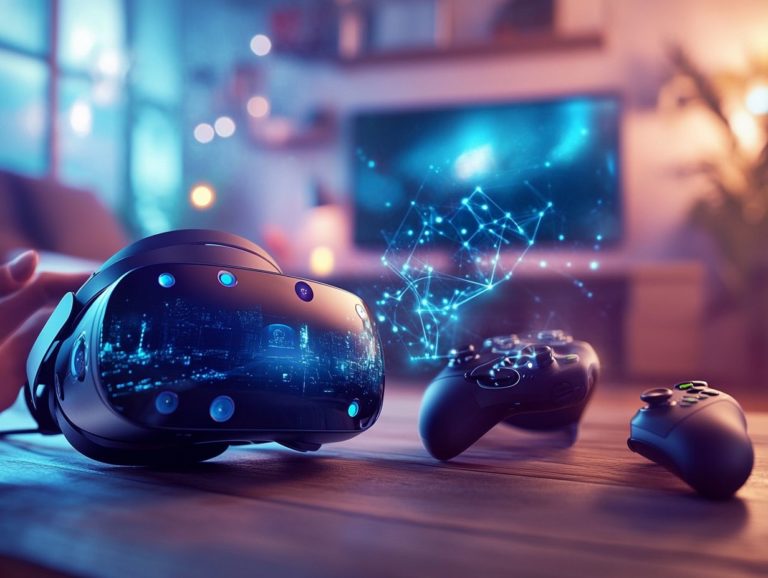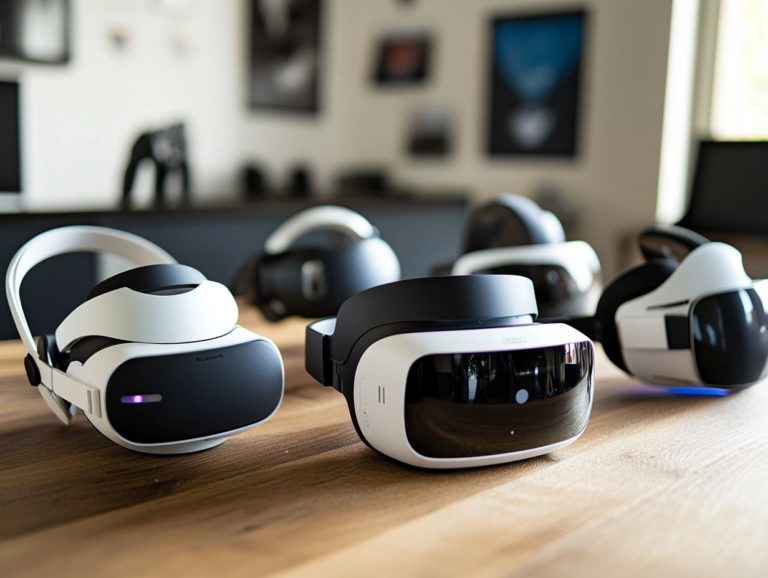5 common vr misconceptions debunked
Virtual reality (VR) has become quite the buzzword lately, but you might be surprised to discover that many misconceptions still obscure its true potential. You may think VR is just for gamers or worry about its supposed eye-straining effects. However, these myths can overshadow the technology s extensive applications.
Let s dive right in and debunk five common misconceptions about VR. We ll explore how it s being utilized across various industries and showcase the benefits it offers beyond mere entertainment. We ll also delve into important safety measures and discuss what the future holds for this fascinating technology. Get ready to uncover the truth behind VR!
Contents
Key Takeaways:
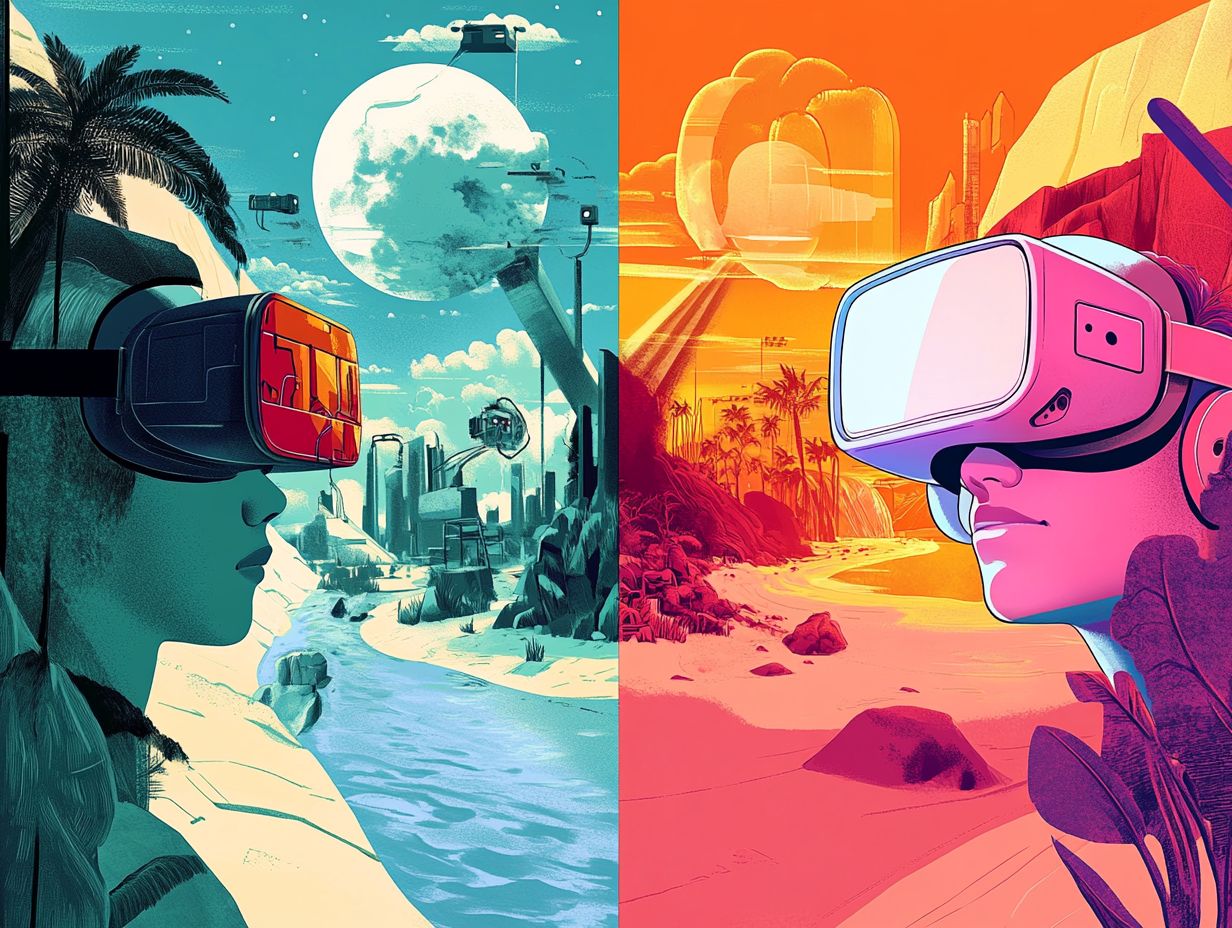
- VR technology has expanded beyond gaming and is being used in various industries.
- VR can be a shared experience and can bring people together.
- Cost-effective VR options are available, making it more accessible to wider audiences.
1. Virtual Reality Is Just for Gaming
VR is often limited to gaming, yet its potential spans many sectors, including education, healthcare, and enterprise solutions. It can deliver immersive experiences that genuinely transform user interactions in virtual spaces like Facebook Horizon and beyond.
Imagine using VR for therapy, helping patients confront their anxiety disorders or phobias in a controlled environment. It s not just about overcoming fears; it also plays a crucial role in training programs, allowing medical professionals to hone their skills in lifelike simulations without putting patient safety at risk.
Educational institutions are beginning to harness tools like the Oculus Quest and Oculus Rift, popular VR headsets that provide immersive experiences. With these, students can explore historical landmarks or conduct scientific experiments, expanding their learning horizons.
Social media interactions are evolving through VR. This technology makes digital communication not only more engaging but also deeply immersive, bridging distances in genuinely heartfelt ways.
2. VR Is a Solitary Experience
Many think of VR as a solo endeavor, but the latest advancements have ushered in social applications that invite you to interact with others in immersive virtual environments. This shift boosts user engagement and cultivates unforgettable shared experiences.
Platforms like Facebook Horizon create spaces where you can meet, collaborate, and innovate alongside others, effortlessly breaking down geographical barriers. With your engaging avatar, you can attend virtual events, explore enchanting worlds, or dive into interactive games, completely transforming how you connect with friends.
The role of VR in social media transcends basic communication; it allows vibrant communities to thrive in dynamic settings. Here, you can share your creativity and experiences, fostering a genuine sense of belonging.
VR reshapes individual interactions and serves as a catalyst for building communities in ways you may have never imagined.
3. VR Is Expensive
The belief that VR is financially out of reach has changed with the arrival of affordable options like the Oculus Quest. This device shows that you can enjoy high-quality, immersive experiences without draining your wallet, driving remarkable growth in the VR market.
Earlier systems like the Oculus Rift required hefty investments not just in the headset but also in high-end PC hardware. This created obstacles for many potential users. Thanks to this shift toward budget-friendly alternatives, a wider audience can now explore virtual worlds, sparking increased interest and innovative applications across sectors like education, gaming, and healthcare.
This democratization of VR technology broadens the consumer base and motivates developers to create unique content for various markets. It s paving the way for a future where immersive experiences seamlessly integrate into everyday life.
Ready to explore the world of VR? Dive in and experience the excitement for yourself!
4. VR Is Harmful to Your Eyes
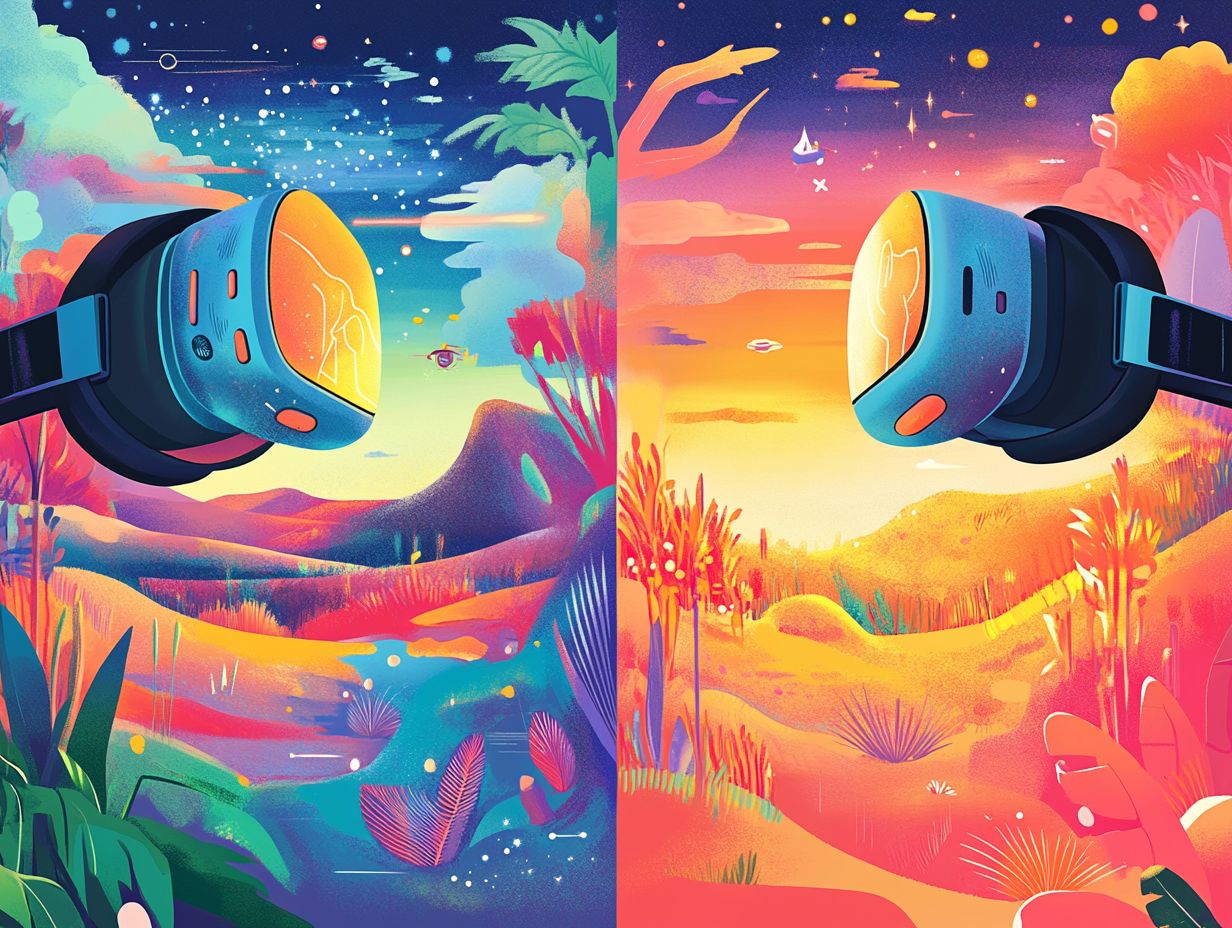
Many people worry that VR can harm their eyes. These concerns often stem from motion sickness and discomfort.
However, recent advancements in VR headsets have dramatically improved user comfort. Features like higher refresh rates and personalized lens adjustments help minimize eye strain.
Remember to take regular breaks and ensure your headset fits comfortably. This will enhance your experience and reduce discomfort.
As a VR enthusiast, consider using software that gradually acclimates you to the virtual environment. This can help ease any feelings of nausea.
By understanding these modern features and following recommended practices, you can enjoy VR without the worry of eye strain.
5. VR Is Only for Young People
Many believe VR is just for young people. This view overlooks its significant applications in nursing education and healthcare.
Increasingly, institutions are adopting VR for realistic clinical training. This allows both experienced professionals and beginners to refine their skills safely.
But VR’s impact extends beyond healthcare; it s also transforming manufacturing. Trainees can practice complex assembly processes in a secure virtual space.
In education, students can explore historical events or distant planets right from their classrooms. This versatility makes VR an invaluable tool across various fields.
What Is Virtual Reality and How Does It Work?
Virtual Reality (VR) combines hardware and software to create interactive environments. It allows you to experience scenarios that replicate or transform real life.
VR overlaps with augmented reality, enhancing content you interact with. Using headsets and motion controllers, VR offers rich sensory experiences in gaming, education, and healthcare.
In gaming, platforms like Oculus Quest and PlayStation VR let you dive into fantastic worlds. In education, virtual classrooms help students learn with immersive experiences.
Healthcare professionals use VR for realistic training simulations. This technology is also involved in therapeutic practices.
VR’s broad applicability and its relationship with augmented reality make it a versatile tool for enhanced interaction.
How Is VR Being Used in Different Industries?
VR is transforming various industries through immersive programs and simulations. In healthcare, VR allows medical professionals to practice surgeries without risks.
This not only boosts skill development but also ensures patient safety. In education, students can explore historical landmarks and scientific concepts interactively.
Companies use VR to improve employee onboarding and safety training. Simulating real-world scenarios builds confidence and prepares you for success.
Through immersive experiences, VR enhances productivity and deepens understanding, leading to better learning outcomes.
What Are the Benefits of VR Beyond Entertainment?
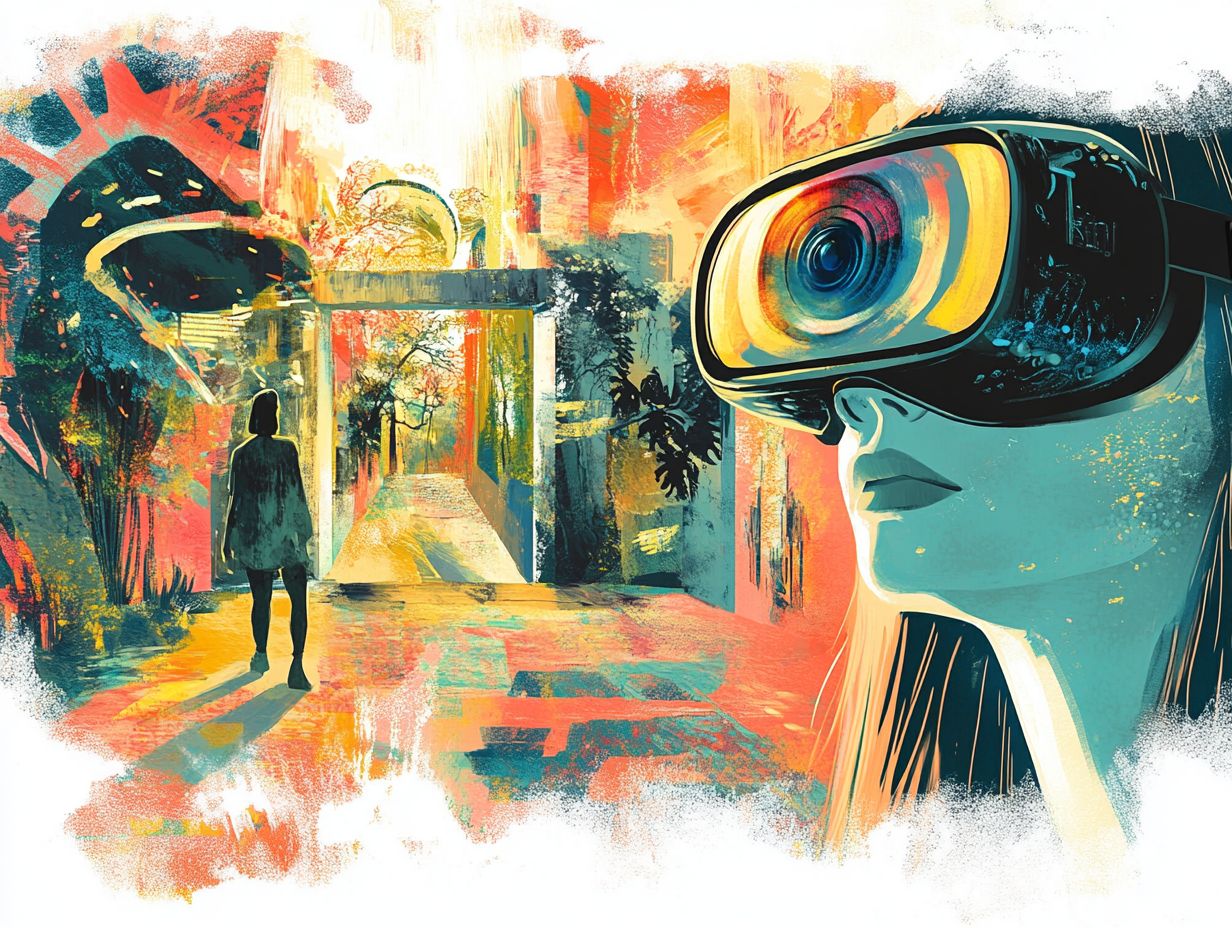
Beyond mere entertainment, VR presents an impressive array of benefits. These include its use in cognitive behavioral therapy, immersive training environments, and enhanced engagement in educational settings. This showcases its remarkable versatility.
In the healthcare sector, for example, VR enables professionals to simulate medical scenarios. This gives them the chance to practice and hone their skills in a risk-free environment, significantly enhancing patient outcomes.
In education, this technology is revolutionizing the learning experience. It crafts interactive lessons that accommodate various learning styles, making complex subjects not only more accessible but also truly engaging.
Regarding training, organizations harness VR for employee development. This ensures that staff members are not just job-ready but also exude confidence. The combination of realism and engagement encourages deeper understanding and retention of knowledge, ultimately transforming the way skills are taught and learned.
What Are the Potential Risks of VR?
While VR technology offers a wealth of advantages, don t ignore these risks! Being aware of them can enhance your VR experience. Potential risks include motion sickness and discomfort, which could impact your comfort and overall experience if not properly addressed.
These issues often stem from the disconnect between your physical sensations and the virtual environment. This can create a disorienting experience, leading to symptoms ranging from nausea to fatigue. Therefore, effective solutions are crucial for both developers and users.
Technological advancements, such as enhanced frame rates and improved motion tracking, aim to mitigate these discomforts. User education is vital. It s essential for you to take regular breaks and adjust settings to optimize your experience.
By proactively addressing these challenges, the gaming community can cultivate a more enjoyable and accessible virtual reality environment for everyone.
How Can One Safely Use VR?
You can maximize your VR experience by following these simple steps. This includes selecting the appropriate VR hardware and ensuring you have ample space for movement. Recognizing the significance of six degrees of freedom tracking in enhancing your comfort is also important.
This thoughtful preparation lays the groundwork for a far more immersive experience. Take the time to adjust the headset straps for a snug fit; comfort is paramount during those extended sessions.
Don’t underestimate the importance of regular breaks. These intervals help stave off fatigue and give your eyes a chance to rest, allowing your mind a moment to reset.
Being aware of your surroundings and eliminating possible hazards can significantly reduce the risk of accidents. This paves the way for a safer and more enjoyable VR adventure.
What Is the Future of VR Technology?
The future of VR technology is on the brink of extraordinary innovation and growth. Advancements in immersive technology will redefine your user experience and expand the VR market across multiple sectors.
As industries such as healthcare, education, and entertainment embrace these cutting-edge applications, the potential for virtual reality to craft personalized and engaging experiences becomes increasingly clear.
Healthcare professionals are particularly keen on utilizing VR for training simulations and patient therapy. Educational institutions are weaving it into their curricula to enhance learning outcomes.
With hardware becoming more affordable and accessible, a broader audience will step into the VR ecosystem. This will spark creativity and experimentation like never before.
This trajectory not only hints at a more interconnected virtual world but also promises groundbreaking innovations that will transform your interactions in countless ways.
Frequently Asked Questions
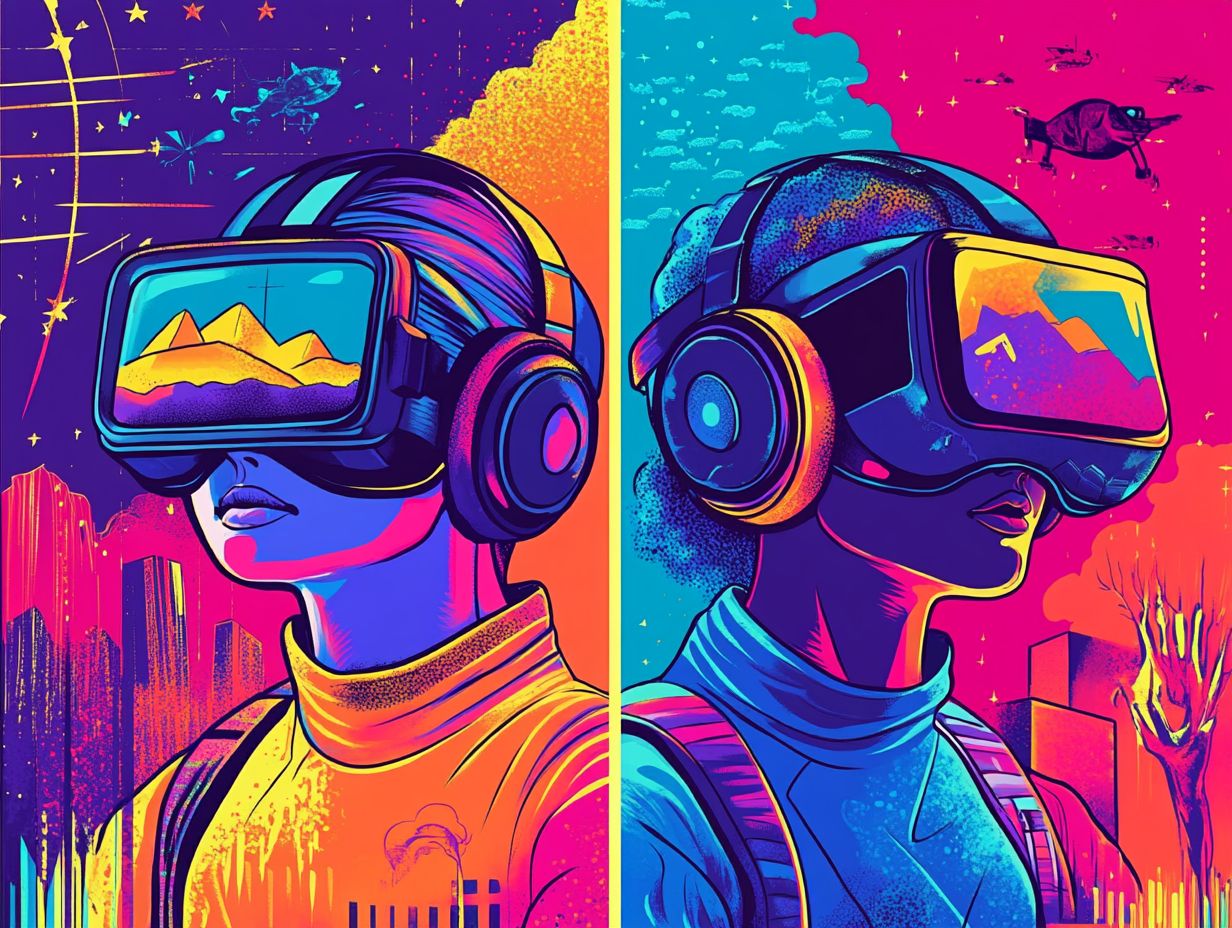
1. What are the most common misconceptions about VR?
- It is only for gaming.
- It is expensive.
- It is isolating.
- It causes motion sickness.
- It is only for tech enthusiasts.
Dive into the world of VR today and discover what it has to offer!
2. Is VR only for gaming?
No, virtual reality (VR) has many uses. It plays a big role in education, healthcare, and architecture.
3. Is VR expensive?
High-end VR headsets can be costly. However, there are budget-friendly options available, and prices are likely to drop as VR becomes more common.
4. Does VR cause motion sickness?
This is a common misconception. With improvements in VR design, feelings of dizziness or nausea are less frequent.
There are also techniques to help minimize these feelings.
5. Is VR isolating?
Wearing a VR headset might seem isolating, but many experiences offer multiplayer options. You can build social connections and engage with others in exciting ways!
6. Is VR only for tech enthusiasts?
While tech enthusiasts were early adopters, VR is now user-friendly for everyone. People of all backgrounds and interests can enjoy it!


